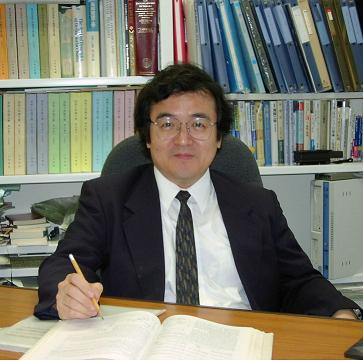
Tomoya Shibayama
Professor, Waseda University
Address: 3-4-1 Okubo, Shinjuku-ku, Tokyo 169-8555, Japan
Room: 51-16-05, Nishi-Waseda Campus
mail: shibayama(at)waseda.jp (Please change (at) to @)
Past Publication
Journal Papers (English)
- Esteban, M., Takagi, H. & Shibayama, T. (2009): Methodology for the simulation of the construction of a breakwater taking into account climate and construction accident risks, Coastal Engineering Journal, 51(1), 49-68.
- Esteban, M., Webersik, C. & Shibayama, T. (2009): Effect of a global warming-induced increase in typhoon intensity on urban productivity in Taiwan, Sustainability Science, 4(2), 151-163.
- Oveisya, A., Hall, K., Soltanpour, M. & Shibayama, T. (2009): A two-dimensional horizontal wave propagation and mud mass transport model, Continental Shelf Research, 29(3), 652–665.
- Soltanpour, M., Oveisy, A. & Shibayama, T. (2008): Numerical modeling of wave transformation on muddy coasts, Coastal Engineering Journal, 50(2), 143-160.
- Elghamrawy, T. & Shibayama, T. (2008): Total quality management implementation in the Egyptian construction industry, Journal of Management in Engineering, ASCE, 24(3), 156–161.
- Esteban, M., Takagi, H. & Shibayama, T. (2007): Improvement in calculation of resistance force on caisson sliding due to tilting, Coastal Engineering Journal, 49(4), 417-441.
- Jayaratne, M. P. R. & Shibayama, T. (2007): Suspended sediment concentration on beaches under three different mechanisms, Coastal Engineering Journal, 49(4), 357-392.
- Rattanapitikon, W. & Shibayama, T. (2007): Estimation of shallow water representative wave heights, Coastal Engineering Journal, 49(3), 291-310.
- Soltanpour, M., Shibayama, T. & Masuya, Y. (2007): Irregular wave attenuation and mud mass transport, Coastal Engineering Journal, 49(2), 127-147.
- Suzuki, T., Okayasu, A. & Shibayama, T. (2007): A numerical study of intermittent sediment concentration under breaking waves in the surf zone, Coastal Engineering, 54, 433-444.
- Rattanapitikon, W. & Shibayama, T. (2006): Breaking wave formulas for breaking depth and orbital to phase velocity ratio, Coastal Engineering Journal, 48(4), 395-416.
- Rattanapitikon, W., Karunchintadit, R. & Shibayama, T. (2003): Irregular wave height transformation using representative wave approach, Coastal Engineering Journal, 45(3), 489-510.
- Soltanpour, M., Shibayama, T. & Noma, T. (2003): Cross-shore mud transport and beach deformation model, Coastal Engineering Journal, 45(3), 363-386.
- Tuan, L. T. & Shibayama, T. (2003): Application of GIS to evaluate long-term variation of sediment discharge to coastal environment, Coastal Engineering Journal, 45(2), 275-293.
- Rattanapitikon, W., Vivattanasirisak, T. & Shibayama, T. (2003): A proposal of new breaker height formula, Coastal Engineering Journal, 45(1), 29-48.
- Rattanapitikon, W. & Shibayama, T. (2000): Verification and modification of breaker height formulas, Coastal Engineering Journal, 42(4), 389-406.
- Rattanapitikon, W. & Shibayama, T. (2000): Simple model for undertow profile, Coastal Engineering Journal, 42(1), 1-30.
- Rattanapitikon, W. & Shibayama, T. (1998): Energy dissipation model for regular and irregular breaking waves, Coastal Engineering Journal, 40(4), 327-346.
- Shibayama, T. & Nistor, I. (1998): Modeling of time-dependent sand transport at the bottom boundary layer in the surf zone, Coastal Engineering Journal, 40(3), 241-263.
- Duy, N. T. & Shibayama, T. (1997): A convection-diffusion model for suspended sediment in the surf zone, Journal of Geophysical Research, Oceans, 102(C10), 23169-23186.
- Shibayama, T. & Duy, N. T. (1994): A 2-D vertical model for wave and current in the surf zone based on the turbulent flow equations, Coastal Engineering in Japan, 37(1), 41-65.
- Shibayama, T. & An, N. N. (1993): A visco-elastic-plastic model for wave-mud interaction, Coastal Engineering in Japan, 36(1), 67-89.
- Shibayama, T. & Rattanapitikon, W. (1993): Vertical distribution of suspended sediment concentration in and outside surf zone, Coastal Engineering in Japan, 36(1), 49-65.
- Shibayama, T. & Pun, K. L. (1992): Multi-level model for hydrodynamic circulation and dispersion process in bays, Coastal Engineering in Japan, 35(1), 49-66.
- Sato, S., Homma, K. & Shibayama, T. (1990): Laboratory study on sand suspension due to breaking waves, Coastal Engineering in Japan, 33(2), 219-231.
- Sato, S., Ozaki, M. & Shibayama, T. (1990): Breaking conditions of composite and random waves, Coastal Engineering in Japan, 33(2), 133-143.
- Shibayama, T., Sato, S., Asada, H. & Temmyo, T. (1989): Sediment transport rate in wave-current coexistent field, Coastal Engineering in Japan, 32(2), 161-171.
- Sato, S., Isayama, T. & Shibayama, T. (1989): Long-wave component in near-bottom velocities under random waves on a gentle slope, Coastal Engineering in Japan, 32(2), 149-159.
- Shibayama, T., Takikawa, H. & Horikawa, K. (1986): Mud mass transport due to waves, Coastal Engineering in Japan, 29, 151-161.
- Shibayama, T. & Horikawa, K. (1985): A numerical model for two dimensional beach transformation, Proceedings of the Japan Society of Civil Engineers, No. 357/II-3, 167-176.
- Shibayama, T. & Horikawa, K. (1982): Sediment suspension due to breaking waves, Coastal Engineering in Japan, 25, 163-176.
- Shibayama, T. & Horikawa, K. (1980): Bed load measurement and prediction of two-dimensional beach transformation due to waves, Coastal Engineering in Japan, 23, 179-190.
- Shibayama, T. & Horikawa, K. (1980): Laboratory study on sediment transport mechanism due to wave action, Proceedings of the Japan Society of Civil Engineers, No. 296, 131-141.